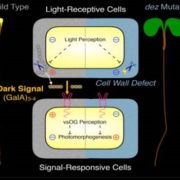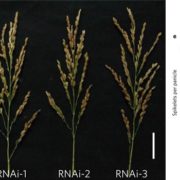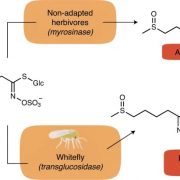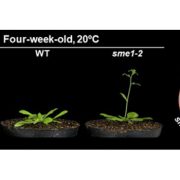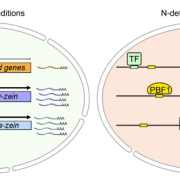Opinion. Feeling the heat: Searching for plant thermosensors (Trends Plant Sci)
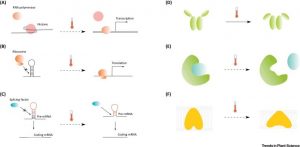 How does a plant sense the elevation in atmospheric temperature? What are the missing links betweena rise in atmospheric temperature, its sensing, and responses triggered? Vu et al. discuss how conformational and structural changes of DNA, RNA and proteins could be the sensors to temperature change. For example the temperature rise above 22OC indirectly induce the displaced of histone H2A.Z from nucleosomes in promoters and trigger the transcription of genes. The article also illustrates the various mode of temperature sensing by well-known plant development regulators such as FLOWERING LOCUS M (FLM; alternative splicing) and LONG ELONGARE0 HYPOCOTYL (LHY; single nucleotide polymorphism). Conclusively, the authors argued the need for more studies to explore biological thermosensors in plants in light of the expected rise in global temperature and its influence on crop productivity. (Summary by Kaushal Kumar Bhati) Trends Plant Sci 10.1016/j.tplants.2018.11.004
How does a plant sense the elevation in atmospheric temperature? What are the missing links betweena rise in atmospheric temperature, its sensing, and responses triggered? Vu et al. discuss how conformational and structural changes of DNA, RNA and proteins could be the sensors to temperature change. For example the temperature rise above 22OC indirectly induce the displaced of histone H2A.Z from nucleosomes in promoters and trigger the transcription of genes. The article also illustrates the various mode of temperature sensing by well-known plant development regulators such as FLOWERING LOCUS M (FLM; alternative splicing) and LONG ELONGARE0 HYPOCOTYL (LHY; single nucleotide polymorphism). Conclusively, the authors argued the need for more studies to explore biological thermosensors in plants in light of the expected rise in global temperature and its influence on crop productivity. (Summary by Kaushal Kumar Bhati) Trends Plant Sci 10.1016/j.tplants.2018.11.004


